We work with a range of organisations and individuals to produce specialist articles covering subjects relevant to independent education.
Innovative Approaches to Teaching Music and Integrating Technology (Premier Partner Article by M:Tech)
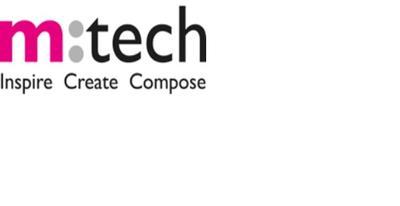
by Jack Hardman, Director of Music at M:Tech, IAPS Premier Music Partner
[email protected]
May 2024
Whenever I meet a new school and start talking about music technology, there is one phrase that comes up more than any other. ‘Barrier to entry’.
If I were to draw a single benefit of technology within music, it would have to be how accessible it has made our subject. There is something for everyone, an application for every purpose.
Whether it’s something as simple as a metronome app; helping a violinist prepare for an exam; or a bespoke built instrument, perfectly honed for the needs of a disabled musician; technology has lowered the barrier to entry for music.
In this article, I look at the ways technology has made music more universal, speaking to experts in the field who are pushing towards change. I also discuss some of the work that still needs to be done to make the world of music truly available for all.
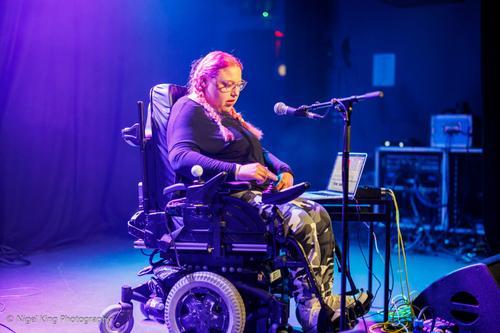
Purpose built, purpose met
Over the course of the last few weeks, I have had the opportunity to speak to some truly inspirational members of the accessible music community. With a focus on solving real life problems, their work is giving more people than ever before the chance to get creative.
Drake Music is a UK leader in music, disability and technology. For over 20 years it has been pioneering accessible music technology, with the goal of getting more people into making music.
Tim Yates, Head of Research and Innovation at Drake, offered invaluable insight into the landscape of accessible music tech and the work that is being done in the space. Core to Drake’s work is the building of bespoke instruments, perfectly tailored to the requirements of individual people, and designed in collaboration with the very people who need them.
“Our view to creating bespoke instruments is always through co-design. DM builds instruments for a particular context, in collaboration with artists to meet their particular needs. Many times, accessible instruments have been created by inventors. These aren’t built for specific purposes, so ultimately never meet the needs of anyone!” he says.
DigitMusic, a tech company based in Derby, has also designed a product to make music easier to access for everyone. Its controller, CMPSR, is a forward-thinking music joystick designed to make playing an instrument fun and accessible, particularly for disabled children and adults.
After working as part of The Able Orchestra project, founder Simon Tew immediately saw how technology could be used to help children experience music better.
“I used to teach a girl, who due to her personal circumstances hadn’t found an instrument that worked for her. She felt that music wasn’t for her. During the AO projects, she used iPads to make music and got to feel the excitement from playing live.”
Inspired by the positive outcomes and experiences of the project, he used them to help develop Digit’s CMPSR.
“Once we had developed the early prototype of CMPSR, we got her to play music and advise us on how we could develop it further to meet her accessibility requirements.
"Now, a few years on, she is performing for BBC Introducing and working as an advocate for disabled musicians and it is almost impossible to get her on the phone because she is so busy!”
More to do
Unfortunately, the non-traditional nature of these instruments can leave players with a lack of pathways to take their music further. This poses a real problem for the world of music education; while most agree that ‘music is for all’, there is evidently still a glass ceiling that means many will only be able to take their love for the subject so far.
On the challenges bespoke instrumentalists face, Tim commented:"The traditional orchestral instrument model means music is unavailable to many. What happens if a disabled musician plays a bespoke instrument that does not have its own grade system. How do you progress? How do you join a conservatoire? What repertoire do you have access to? It can completely limit access to professional music routes.”
Unlocking creativity
At M:Tech, we specialise in teaching children how to compose music to screen. Teaching children as young as Year 3, we introduce creativity when children should be at their most formative and expressive age. However, after years of teaching composition, I’ve always been struck by how inhibiting some children find creativity.
I believe traditional music can sometimes seem intimidating for children, especially those who are still looking for their access point to music. In a landscape where classical instruments and theory can be perceived as ‘proper’ music, children can feel completely removed from the music they might listen to at home. This can have a knock-on effect to creativity, leaving children scared to improvise or express their ideas for fear of ‘doing it wrong’. Technology can unlock that creativity, giving children a safe space in which to explore their musical ideas.
This sentiment was echoed by Digit’s Simon Tew, who saw first-hand how music technology could act as the key to unlock the potential of students.
“I met a student as part of a pupil referral unit. He arrived with no drive to create music but, after showing him the first steps of choosing a sound in a DAW (digital audio workstation), he got the bug.
"It's amazing how much you can do with just a couple of notes and the almost infinite sound palette we can now carry around in our pockets.
"Fast forward ten years and he is now a far better sound designer than me and creates music for many artists!”
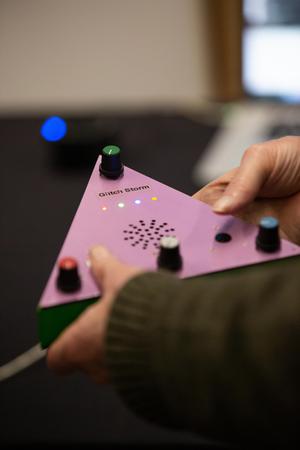
The future of accessible music tech
It’s clear that the landscape of music and accessibility will be radically different within the next 20 years, with huge progress being made all the time.
Tim feels that rather than seeing tech and tradition as two separate threads of music running in parallel, accessibility is really about opportunity.
“In 20 years' time, things could be radically different. Big music tech companies are taking this seriously, making accessibility needs standard practice in the software they create. We hope to open up the grade process too, making it more open to bespoke and non-traditional instruments.
"If a primary class is making music using ukuleles, but a child can’t join in, they may never get the opportunity to get to where they want to go.
"The key to all music, whether it’s a traditional or bespoke instrument, is practice. There is no conflict between technology and tradition, there’s no need to be scared of it. We just need to give people that starting point to be able to practise.”
Simon also sees the changing landscape of music technology as a wholly good thing for music education.
“The modern world of music is an exciting place. The industry landscape is changing to put power back in the hands of the creator, and everyone can now access tools to create their own music wherever they are.
"The fact these technologies are appearing in the classroom is an exciting opportunity for teachers and students to engage in creativity in new and exciting ways. The more people making music, the happier the world will be!”
Closing thoughts
In embracing accessible music technology, we are not only lowering barriers to entry, but unlocking the creative potential of those who may have previously felt excluded from the world of music.
It's clear that technology will play an increasingly vital role in making music education truly accessible for all. Ultimately, by bridging the gap between tradition and innovation, we can ensure that every aspiring musician has the opportunity to explore their creative ideas and contribute to the world of music-making.
If you would like to explore introducing music technology at your school, please email M:Tech Director of Music Jack Hardman.
M:Tech is an IAPS Premier Partner and is an engaging music technology and composition programme designed for children in IAPS prep schools. Running after-school, this innovative course introduces learners to fundamental music theory and composition skills through dynamic multimedia projects.
Music and Emotional Intelligence: Nurturing Empathy Through Composition (Premier Partner article by M:Tech)

by Jack Hardman, Director of Music at M:Tech, IAPS Premier Music Partner
[email protected]
February 2024
We are all familiar with the idea that music is a universal language. A captivating melody or an uplifting song has the power to bring us together, creating a shared experience that resonates with our emotions.
More than just a source of happiness, music can become a medium for us to process and express our feelings. For children, engaging in creativity at a young age can offer a unique avenue for unlocking this form of self-expression. Having taught music technology to hundreds of pupils in schools over the years, I've witnessed first hand the positive impact that creating an original piece of work can have.
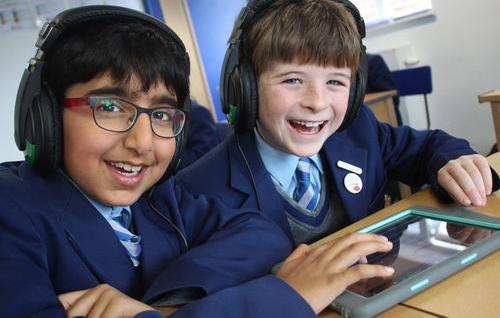
In this article, I explore the diverse impact of music on the emotional wellbeing of children.
Setting The Tone at School
If the art department is considered to be the eyes of a school, then the music department is its ears. Whether it’s a carol concert, end-of-term performance, or even a soundtrack during assembly, music sets the creative tone of a school.
However, the benefits of this go further than we might at first think. George Peterkin, a leading mental health first aider with a background in independent education, believes the daily ritual of starting school with music establishes routine and structure.
"Music gives a dopamine release for anyone who plays, performs, or even just listens to it.
"Every morning the children would come into a piece of music I would play - usually something much older than them. On a basic level it gives them routine and structure at the beginning of their school day, which boosts wellbeing."
He goes on to comment on the wider benefit of creating and performing, especially in those who haven’t yet excelled in other areas of school life.
"In terms of school bands, orchestras and performances, it can give those children who perhaps are not top of the school, the chance to excel and shine. This can boost self-esteem which is vital for their mental health."
“Where words fail, music speaks”
From exam stress to transitioning to secondary school, school can feel like a highly-pressurised environment for learners. While there are, of course, academic pressures and targets within the music curriculum, taking learnings from the world of music therapy can offer us invaluable insight into how it can harness self-expression.
Emma Pelkiewicz, a music therapist at Linden Lodge School in Wimbledon, discusses the therapeutic benefits music can have: "Music therapy provides a safe space to express and understand your emotions. Over time, service users may become more emotionally literate and feel safer to communicate their feelings.
"Some may find it difficult or impossible to verbalise how they feel. Free improvisation (playing music on the spot) provides a vessel for self-expression. The way we respond to this music can show the service users that they are heard, understood and accepted."
“Where words fail, music speaks”- Hans Christian Anderson.
"Remembering the wider benefits of our subject can help better understand the experience of our pupils. Beyond being a simple lesson within a timetable, an inspirational lesson can help give children the toolkit to better understand themselves and others," Emma adds.
She goes on to comment on the relationship between creativity and empathy: "I believe that in being empathic or creative, we are connected to ourselves on an emotional level. If art moves or ‘speaks’ to us, perhaps we relate or empathise with what we are seeing, hearing or experiencing on some level.
"We think of empathy as the ability to put ourselves in someone else’s frame of reference. This can happen on an intellectual level; we can cognitively understand or imagine what someone is going through. We can also empathise on a very visceral level where we feel someone else’s emotions.
"Perhaps one of the motivations to create is to be empathised with. It’s a human need to feel understood and validated."
Emma’s perspective is backed by research into the subject. A 2021 study into the relationship between music and emotional development by the University of Valencia found that activities involving music help children ‘recognise, express, and regulate their emotions effectively, particularly in managing aggression or anger.’
An M:Tech perspective
I’ve seen, first hand, the cathartic benefits that activities like M:Tech can have on children, where a creative ‘safe’ space can encourage them to explore and improvise.
Unlike classroom music lessons, running during extra-curricular time puts M:Tech in a unique position within the school day. Rather than trying to conjure up creativity while being shoehorned into the timetable, we see pupils when traditional academic work is finished. This creates an invaluable mental breathing space for pupils, helping us as teachers to encourage their expression through the music we make.
While there is, of course, a need to quantify and assess music just like any other subject, we must remember the invaluable role creativity can play within the days of the children we teach. It serves as a vital outlet for emotional expression and contributes significantly to the overall wellbeing of children. After all, music is the soundtrack of life!
If you would like to explore introducing music technology at your school, please email M:Tech Director of Music Jack Hardman.
M:Tech is an IAPS Premier Partner and is an engaging music technology and composition programme designed for children in IAPS prep schools. Running after-school, this innovative course introduces learners to fundamental music theory and composition skills through dynamic multimedia projects.
Online risks with Esports
by Ineqe Safeguarding Group
[email protected]
December 2023
INEQE Safeguarding Group believes in empowering people to stay safer through education and the use of innovative technology. As independent safeguarding specialists, INEQE also has an advanced in-house software development capability and delivers safeguarding solutions to a wide spectrum of clients in both the public and private sectors. INEQE is a member of the Safeguarding support network, which lists safeguarding providers on a global scale and the Safety Tech Network, which lists organisations that work to promote safer online experiences.
Online risks with Esports

The first-ever esports tournament took place in 1972 and, today, tournaments like 'The International' boast multi-million-dollar prize pools. On average, children between the ages of 11 and 18 play esports for three and a half hours a day, either at home (94%) or at a friend’s house (40%).
What are Esports?
Esports, or electronic sports, represent competitive online video gaming. From FIFA to Call of Duty to Rocket League, any game with competitive potential can become an esport. The industry is booming, with teams, coaches, sponsorships, and even celebrities like David Beckham, co-owning esports ventures.
- The competitive nature of Esports, reminiscent of arcade battles, has found new life with live-streaming platforms like Twitch and YouTube. Esports professionals, regarded like footballers, often double as content creators, expanding esports as a legitimate career option. Amateur tournaments, with in-game rewards, are now commonplace.
- Students can develop STEM skills through Esports, involving teamwork, problem-solving, data science, internet technology, and coding.
- Almost half of parents believe Esports should be part of the school curriculum, and two-thirds support it as an extracurricular activity.
What are the Safeguarding Risks?

While Esports presents exciting opportunities, it's essential to consider and understand the trends, risks and threats within the wider Esports arena.
- Exposure to inappropriate content
- Concerns about in-game purchases resembling gambling mechanics
- Online interactions posing risks such as grooming
- Cross-platform challenges and encrypted communications
- Time commitments affecting daily routines
- The emotional impact from competition outcomes
- Lack of global regulatory standards in esports
- Sponsorship influences, especially from energy drink companies
Bridging traditional and digital – the modern music classroom (Premier Partner article by M:Tech)

by Jack Hardman, Director of Music at M:Tech, IAPS Premier Music Partner
[email protected]
November 2023
As you walk the corridors of many music departments, you will encounter an intriguing history of technology.
From the trusted metronome, faithfully keeping time, to the cassette recorder that has long since been retired, the world of music education constantly evolves; just like the technology that supports it. This evolution tells a story of scepticism through to acceptance, where technology is no longer seen as a threat but a powerful ally in the modern music classroom.
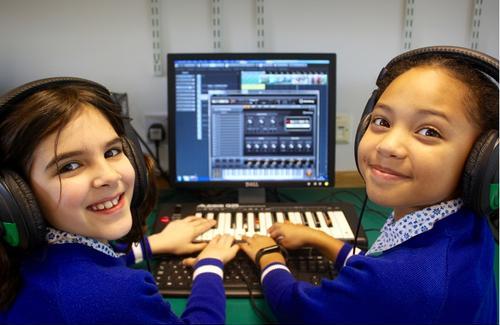
In this article, I sit down with three inspirational music educators to explore how technology is redefining music education, making it more engaging and more inclusive than ever before.
In the classroom
Mimi Munro, IAPS Music Subject Adviser and Head of Junior Music at Channing School, believes that technology allows her pupils to get closer to the heart of the music they love.
“Children have access to a wealth of music through streaming platforms and already have a highly developed sense of taste, even in primary school,” she said. “Although my students love to play in class ensembles and sing together, composition without technology can sometimes fall rather flat.”
Having taught as a visiting composition teacher for the last decade, I have seen my own students' eyes light up as they realise their only limitation is their imagination. Technology brings the world of music-making direct to children’s fingertips, whether it’s discovering the tone and quality of a Chinese zither to getting hands-on with a virtual modular synthesiser.
Mimi echoes this sentiment, noting that technology can be a valuable tool to spark curiosity: “It allows children to feel closer to the music they listen to. Basic-level composition is about learning how to arrange sonic ingredients into a pleasing whole. I would rather use digital tools that inspire the children to dig deeper.”
On the screen
Technology has also revolutionised professional composition and performance. Musicians and composers can harness the power of technology to create, perform, and share their music in ways that were previously unimaginable. Spitfire Audio, for example, has meticulously sampled the entire BBC Symphony Orchestra, allowing composers to test their scores with the world’s best performers.
Hayat Selim, award winning composer (and former member of the team here at M:Tech), has seen these developments streamline her professional workflow: “To be able to hear my vision of a composition straight away, in a digital audio workstation by playing directly with sampled instruments that replicate the sound in my head, has helped me accelerate my way into film scoring.”
She goes on to reflect that this technology serves to facilitate her creativity in a pragmatic and modern way, meeting the ever-growing demands of her industry.
“Music technology is essential for the industry today. Directors now expect to listen to a close-to-final mockup of the music - a piano sketch is simply not enough. The industry expects to be listening to an almost final soundtrack before a production has even started!”
What we’ve learnt
Here at M:Tech, we have seen the mindset of Directors of Music progressively change over time as the landscape has evolved.
When we first introduced our after-school music technology activity to the community in 2006, many DOMs feared it would threaten the very existence of their traditional instrumental lessons. Not at all dramatic! Over the years, research has surfaced showing the true benefits of technology and opinions have gradually changed.
Zayn Goetzee, Course Director at M:Tech, believes technology is an invaluable secret weapon, able to unlock a broad range of skills far beyond music: “At M:Tech, our project-based learning model encourages the children to work on long-term, multifaceted music projects. They compose, record and produce songs and soundtracks, building on their musical ideas week-on-week. These projects require planning, problem-solving, collaboration and time management skills, fostering a deeper understanding of music and its real world applications.”
Our experience has also taught us that tech-based learning can act as a springboard to more traditional music, making it more inclusive and increasing overall participation in the subject.
Zayn reflects: “Inclusivity fosters a sense of belonging and encourages more diversity within music programs. Music tech can also encourage participation from children who have no interest in the traditional music education routes, by widening accessibility and making music relevant to them.”
Final Thoughts
Technology has created countless access points into the world of music education. These new developments have helped make our subject more accessible, more democratic and more enjoyable for many children. Whilst we must protect our musical traditions and be wary of AI composing the next string of radio hits, it’s clear that technology in music has truly helped level the playing field and is here to stay.
If you would like to explore introducing music technology at your school, please email M:Tech Director of Music Jack Hardman.
M:Tech is an IAPS Premier Partner and is an engaging music technology and composition programme designed for children in IAPS prep schools. Running after-school, this innovative course introduces learners to fundamental music theory and composition skills through dynamic multimedia projects.
Nurturing Thinkers: A Blueprint for Deeper Learning

by Paul Main, Founder, Structural Learning
[email protected]
October 2023
Introduction
In an evolving educational landscape, equipping our students with higher order thinking skills is paramount. This guide offers a holistic approach, melding both practical classroom strategies and overarching leadership guidance, to champion deeper cognition and active learning in our classrooms. Drawing on evidence-based methods, we aim to invigorate classroom practices and inspire our future thinkers.
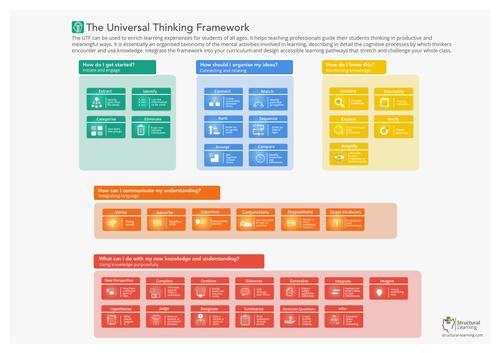
Rationale for Engaging Children in Higher Order Thinking
1. Academic Achievement through Deep Thinking:
Modern education isn't just about rote learning but nurturing cognitive abilities. Deeper levels of thinking lead to enhanced comprehension and better retention. The cognitive demand required for deep thinking ensures that learners don't just memorise but truly understand, internalise, and apply knowledge.
- Academic success hinges on comprehension and application.
- Deep thinking cultivates lasting understanding, not fleeting memorisation.
2. Changing Workplace Dynamics:
The future workplace will value critical and creative thinkers. With rapid technological advancement and evolving job roles, employees need to be adaptable, discerning, and innovative.
- The future belongs to critical and creative thinkers.
- Preparing students for evolving job roles is paramount.
Eight Ways to Promote Higher Order Thinking in Classrooms
1. Thinking Framework:
Embed a robust thinking framework within the curriculum. This acts as a structured approach to foster critical and creative thinking. Teachers will receive a comprehensive copy to seamlessly integrate it.
- Structured approach to nurture thinking.
- Ready-to-use comprehensive framework for educators.
2. Visual Aids:
Use charts, diagrams, and infographics to make abstract concepts tangible. Visuals simplify complex ideas, aiding comprehension and retention.
- Transforms abstract ideas into tangible concepts.
- Enhances comprehension and memory retention.
3. Physical Materials:
Incorporate tangible materials like building blocks, kits, or craft supplies. These promote curiosity, creativity, and offer a hands-on learning experience.
- Fosters creativity and curiosity.
- Hands-on learning deepens understanding.
4. Engage in Dialogues:
Promote critical conversations. Facilitate debates, group discussions, and role-playing to encourage perspective taking and reasoned argumentation.
- Nurtures perspective-taking.
- Enhances critical reasoning abilities.
5. Real-world Problems:
Introduce scenarios or problems from real life. This encourages students to apply their knowledge in practical contexts, enhancing understanding.
- Connects learning to real-world scenarios.
- Promotes practical application of knowledge.
6. Open-ended Questions:
Questions without a definitive answer push students to think deeper, encouraging exploration and fostering analytical thinking.
- Encourages deep exploration.
- Cultivates analytical thinking.
7. Reflection Activities:
Incorporate time for reflection, letting students ponder on what they learned, their understanding, and its applications.
- Nurtures introspection.
- Strengthens learning outcomes.
8. Encourage Metacognition:
Teach students to think about their thinking. Awareness of their thought processes can improve comprehension and problem-solving abilities.
- Improves understanding and problem-solving.
- Empowers students with self-awareness.
Communicating the Agenda to Parents
Engaging parents in the journey towards deeper learning is paramount, as they are influential partners in reinforcing the school's educational ethos at home. Their understanding and endorsement of the agenda not only amplifies its impact but also fosters a cohesive school community, united in the pursuit of cultivating critical and creative thinkers.
1. Visual Communication:
Display posters and wall exhibits around the school. Showcase students' achievements in higher order thinking, making the abstract tangible. These visuals serve as a constant reminder and celebration of the deep thinking happening within classrooms.
- Transforms achievements into tangible visuals.
- Provides constant reminders of the school's commitment.
2. Newsletters & Bulletins:
Regular updates through newsletters can keep parents informed. By showcasing classroom activities and students' achievements in promoting critical thinking, parents gain a clearer understanding of the process.
- Offers insights into classroom activities.
- Establishes regular communication channels.
3. House or Point System:
Introduce a house system or point scheme that focuses on learning skills. Badge the achievements in a manner both children and parents can easily grasp. At the end of the day, parents can clearly see what learning milestones their children have achieved. This not only motivates students but also keeps parents informed and involved.
- Motivates students with recognisable rewards.
- Provides clear, daily insights into children's learning milestones.
Structural Learning aims to enable educators to get the best out of their pupils by developing resources that enable children to think their way through the curriculum.
Top Five ideas for developing life-skills in the classroom
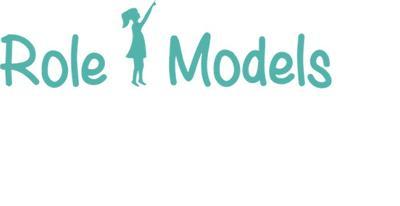
by Louise Treherne, Director of Character Education at Role Models
October 2023
How can teachers make life-skills part of their day-to-day lessons and why is it so vital?
One in six children aged five to 16 were identified as having a probable mental health problem in July 2021. A huge increase from one in nine in 2017. That’s five children in every classroom.
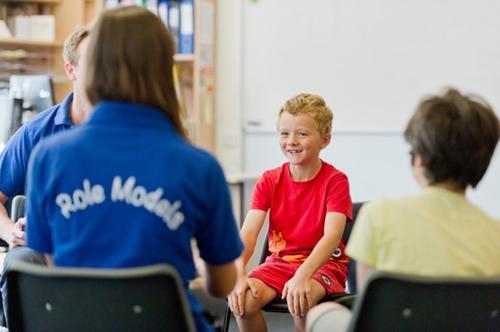
But how can teachers actively help to develop these skills? Here are 5 ideas for you.
Vocalise feeling: Through being more transparent about feelings and emotions, teachers can help to develop emotional awareness within their pupils. Rather than hiding every emotion to remain “unflappable”, teachers can (where appropriate) talk through their feelings aloud. Through sharing with your class that you are feeling upset by some sad news you received, or slightly nervous about a presentation, pupils learn to understand these feelings are all normal, and although potentially uncomfortable, they are part of life.
Let them know when you don’t know: Admitting that you do not know all the answers is a golden opportunity to demonstrate a growth mindset. Getting something wrong in front of your pupils and being comfortable with fallibility is also a wonderful way to demonstrate humility and a mature approach to learning. When you are asked a question, to be able to say, “I don’t know the answer to that, let’s make a plan on how we can find out more”, is a great way to model the approach we hope pupils will adopt in their own learning.
Recognise progress: We all know the growth mindset merits of praising the process rather than the outcome, but what does this look like in the classroom, where many activities often feel outcome-focused? Find opportunities to shine a light on progress rather than perfection. Highlight and praise the most improved as well as the top scorer, and encourage pupils to judge their performance on individual progress. Did they improve their score since their last attempt? Did they improve their time?
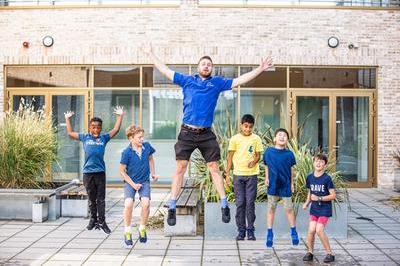
Hunt the good stuff: Try to embed a culture and approach in your class of “hunting the good stuff”. We are all biologically programmed to focus on the bad stuff, the threats and the negatives in our day. When things go wrong, be the voice and beacon in the class to show how we can also find the good. Sharing one good thing about your day or week, or about a specific situation can help to shift perspective. If your pupils are negatively focused on the on-going effect of the pandemic, an appropriately timed question on what positives the situation has also brought can help to bring some hope and perspective.
Remember when: One of the wonderful things about teaching is how well you get to know your pupils. In those situations when a pupil is struggling or about to give up, using “remember when” can be all they need to hear in order to continue. “Remember when you struggled with mastering fractions last term? Look at the progress you’ve made to where you are now. Use that same determination to persevere with these equations.” Teachers know their pupils well and are perfectly placed to reflect back the qualities and capabilities they see.

Making time for unstructured discussion: Although time is a rare commodity in teaching, finding the time to have informal discussions with your pupils can enrich their thinking skills, help them assert their opinions and develop confidence. “Thunks” are simple questions you can pose which will often have no right or wrong answer. They can encourage your pupils to reflect and share their thoughts and build on ideas from others. Using these in your classroom can foster an environment based on curious thinking and one which focuses on how to think rather than what to think. Discussion cards or conversation prompt cards can also be a useful tool.
Implementing one or all five of these strategies into your daily or weekly routine at school, will allow you to form the rapport needed to support your children. As teachers, it’s important for us to create an environment where mental health and emotional literacy discussions are the fabric of the day.
Find out more about how schools partner with Role Models.
Role Models gives children the toolkit to build their confidence, manage their emotions and develop friendships. Fun, online and in-person learning for 3-13 year olds delivered by friendly, experienced mentors. Louise creates and develops content to help children explore four key areas of collaboration – resilience, creativity and leadership – in order to be the best version of themselves.
Is STEM education future-proof

by Asude Altintas, Co-Founder & CEO at Twin Science
[email protected]
October 2023
Education plays a pivotal role in shaping a sustainable future during global challenges. By merging environmental education and 21st-century technologies such as robotics, coding and AI, we not only equip students with future skills but also drive progress towards sustainability.
Why Integrate Sustainability into STEM Education?

STEM education helps us understand the world by combining subjects like science, technology, engineering, art, and math. It encourages critical thinking and problem-solving. However, to fully grasp the world, we need to include sustainability.
When we merge sustainability with STEM, students not only learn scientific ideas but also how to use them to create new and smart solutions. It transforms students into global thinkers who can solve environmental problems. This makes a new generation of thinkers who see how our actions affect the Earth and how to fix problems in a way that helps the planet.
‘’The truth is the 21st century is going to be a really challenging time for the rising generations. So it's imperative that we equip them with knowledge of the issues and the skills to deal with problems caused by climate change such as food security or water scarcity. We need to see STEM For Sustainability integrated into our curriculums just as thoroughly as English and maths are, and we need to see that in every school across the country.’’ -Marcus Culverwell, Headteacher at Reigate St Mary’s
AI-Driven Transformation of STEM Education
Education methodologies are experiencing a profound transformation, thanks to the integration of Generative AI tools. Fueled by advanced algorithms, Generative AI now possesses the capability to analyze individual student data, tailoring learning experiences to each student's unique needs. This personalized and adaptive approach accommodates diverse learning styles and paces, leading to enhanced comprehension and retention rates. The days of a one-size-fits-all classroom are gone, as AI ensures that every student's requirements are met.
The convergence of artificial intelligence, education, and sustainability offers a promising vision for a brighter and more sustainable future. AI's impact on education not only maximizes individual learning potential but also holds tremendous promise for the teaching environment.
Educators are poised to be the primary agents of this transformation, but they often grapple with overwhelming administrative tasks. Can technology, especially AI, streamline administrative duties, liberating educators to dedicate more time to building profound connections with their students? Can it enable the personalization of teaching methods and enhance individual classroom engagement?
Absolutely! Empowering educators with AI represents the fusion of technology and human ingenuity, envisioning a future where educators inspire curiosity, innovation, and a sense of purpose in students, unburdened by excessive workloads.
How can we empower teachers using technology?
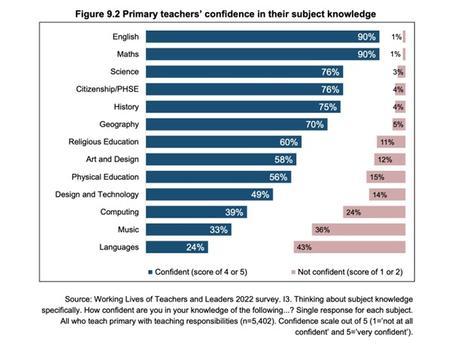
According to data from the Working Lives of Teachers and Leaders 2022 Survey, teachers have a significantly low level of confidence in the areas of computing, design & technology. (Figure 9.2) So, at Twin Science, we use artificial intelligence in our teaching tools. This AI helps with things like keeping track of attendance, making lesson plans easier, grading student work, and making learning more personalized.
This technology makes it easier for teachers to connect with more students, encourage critical thinking, and provide personalized help. It also makes teaching more efficient and enjoyable. Plus, it helps teachers feel more confident, especially in subjects they might not know a lot about.
Additionally, we can use AI to learn what students like and are interested in. This helps teachers understand their students better, which can lead to better communication and more confident learning.
This empowerment enables teachers to engage with more students, stimulate critical thinking, and offer personalized guidance. This methodology not only fosters a more efficient and enriching educational environment, but also assists teachers in areas where they may lack confidence by reducing their workload.
Furthermore, genAI can be employed to track students' unique preferences and interests, which can then be used to provide teachers with valuable insights. Understanding a student's area of interest becomes a powerful communication channel, fostering confidence and creating opportunities for perspective-taking between students and teachers.
Children are the proof of STEM for Sustainability
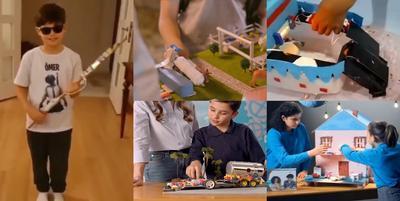
The combination of STEM education, AI technology, and support for teachers is helping us move towards a more sustainable future. When students work on hands-on projects with the help of AI, they become agents of change. For example, with Twin's STEM for Sustainability program, kids learn that they can prevent natural disasters and save lives through an "Earthquake Detection" project. They also understand the importance of sustainable farming and create a "Smart Cane" project to help blind people. They even design an "Ocean Cleaning Robot" using robotics and coding to save the planet.
These students, the future decision-makers, scientists, economists, engineers, and architects, will prioritize taking care of the environment, the people who live in it, and the animals. They will focus on living "with" the land, not just using it. They will be the leaders who bring about cultural change.
A Beginner’s Guide: How to Use AI for Lesson Planning:
Teachers, with the right tools and training, guide students on this important journey. Twin Science offers a unique Continuing Professional Development (CPD) program designed specifically for educators. By joining Twin's AI CPD training, you can learn step-by-step how AI can streamline your lesson-planning process, save time, and enhance student engagement.

Join us on this transformative journey, starting from Thursday 9 November, and earn your Twin Science AI certification upon completion. Don't miss out on this opportunity to elevate your teaching career. Secure your spot by finalizing your registration before November 1st, and together, let's shape the future of education. Register now!
In a world with growing environmental worries, the connection between STEM education, AI technology, and teacher support offers hope. By nurturing these important elements, we make significant progress in promoting sustainability and creating a better future for the next generations.
Twin Science & Robotics is an award-winning UK company that develops children's STEM skills for a sustainable future.
